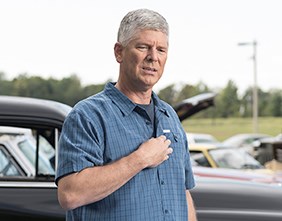Summer Safety – Keep Children Healthy This Summer
posted on: 8/10/2018 11:45:05 AM
Health & Fitness Guest Columnist
Christine Rodriguez, Certified Nurse Practitioner
Lima Memorial Physicians | Lima Pediatrics
From swimming to biking, summer is the perfect time for families to spend time outdoors. Traditional summer activities can be healthy and fun, but this is also the time to remind ourselves there are risks associated with these activities. The American Academy of Pediatrics (AAP) offers tips to keep kids safe during the summer season, and I would like to review these with you.
Water safety is something none of us should every take for granted. Constant supervision combined with using the appropriate safety equipment is vital to protecting children from drowning. Never leave children alone in or near a pool or body of water…ever. Even when a lifeguard is on duty, actively supervise children when at the pool or beach. Water crises can happen in the blink of an eye. Inflatable swimming aids are not a substitute for life jackets. Home pools should be surrounded by a four-sided fence that is at least four feet high and gates should be self-closing and self-latching. Following these simple tips could safe a child’s life.
Playing outside is a healthy form of exercise for children; however, during the high temperatures of summer, parents need to monitor their activity and watch for signs of overheating. Prior to any activity outside, children should drink water often and avoid thirst. The AAP recommends children should take a drink break every 20 minutes and always have water or a sport drink available.

The first, and best, line of defense against harmful ultraviolet radiation (UVR) exposure is covering up. Stay in the shade whenever possible, and limit sun exposure during the peak intensity hours - between 10 a.m. and 4 p.m. It is recommended infants under six months of age should avoid sun exposure all together. During the heat of summer, dress them in lightweight, long pants and long-sleeved shirts and also wear a brimmed hat. If shade is not available, apply sunscreen to exposed areas such as the face and backs of hands. Sunscreen should be broad-spectrum and applied approximately 15 minutes before going outside. Remember to reapply every two hours and especially after swimming or sweating.
Insect bites and insect-transmitted disease is another concern of summertime. To protect children from these risks, really think about your surrounding environment and choose the right repellent. Avoid areas of stagnant water or places where insects gather or nest. Do not use scented soaps or perfumes on your child as this tends to attract insects. Avoid combination sunscreen / insect repellent products. Sunscreen needs to be reapplied often; however, insect repellent does not. If your family will be outside in the evening, have your child cover up with lightweight long-sleeved shirts, pants and socks to prevent bites. Also, remember to check hair and skin at the end of the day for ticks. Talk to your pediatric healthcare provider about using insect repellents with diethyltoluamide or DEET.
Many summer activities requires extra equipment protection for safety. The best way to prevent head injuries or death for any age when biking, skateboarding or rollerblading is to always wear properly fitted helmets. Parents need to set the example and wear helmets when they ride, also. Ride on a sidewalk whenever possible. If a sidewalk is not available, ride in the same direction as traffic and as far to the right as possible. Children should never ride at night.
We still have plenty more summer days to enjoy and spending this time outdoors and active as much as possible is always preferred. But, following these simple tips will avoid unnecessary trips to the ER or Walk-In Care. As summer begins to come to an end, remember to schedule your child’s yearly wellness visit and discuss these and additional summer safety tips.
Originally published in The Lima News Health and Fitness section.
Website





